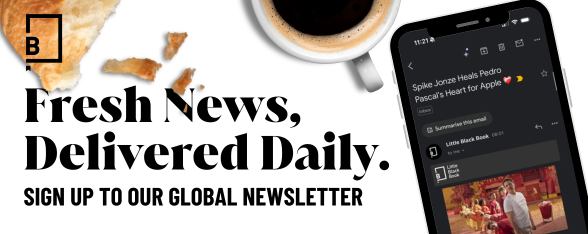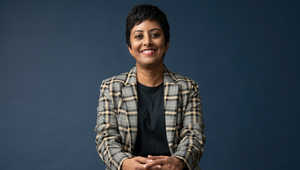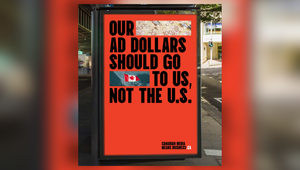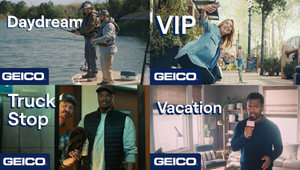
Meeting of Minds with Headspace

Headspace is a platform with a purpose - to ‘improve the health and happiness of the world’. Over the past 12 years, it has brought the tools and techniques of mindfulness and meditation to millions of people, opening up the practice of meditation and opening up conversations about wellness and mental health. And as it develops, Headspace is identifying more opportunities to show up and communities to support.
“One of the really important things that we’re focusing on at the moment as a brand is closing the gap of education in subjects that don’t typically get the attention or the kind of rigour that needs to exist,” explains Louise Troen, VP of Content and Studios Marketing at Headspace.
That’s the rationale behind its latest launch, The Women’s Collection, which seeks to educate and support anyone who identifies as a woman as they navigate challenges that women have generally been left to tackle alone. A recent research project from Headspace and partners Peanut (of which more later), found the 89% of women thinks the medical world doesn’t take women’s sexual desires seriously. 78% have experienced low sex drive, but 53% believe that low sex drive is a taboo topic - and 70% of women want better access to information to improve their sex lives. The collection covers three main categories: body and health; sex and relationships; and strength in solidarity.
The collection launches with a collaboration with online women’s community Peanut, and a short film created with members of that community called ‘Let’s Talk about Sex’. Produced by an all-women crew it explores a diverse range of experiences, from a grieving widow re-entering the dating world, a woman who is expecting a baby with a trans woman and someone else having issues with postpartum sex. The conversation is fostered by psychosexual therapist Kate Moyle, who also voices the in-app guided content.
“I really don’t think there’s a better women’s community out there that is as raw and honest as Peanut,” says Louise of the partnership. Prior to joining Headspace, Louise worked at Bumble with Peanut’s CEO Michelle Kennedy. “We never actually worked together but our passion and how much we’ve both committed to those who identify as women feeling the strongest version of themselves. I knew that working with them, from a vision point of view, would just end brilliantly.”
Being able to tap into that community helped the Headspace team find out what really matters, where to focus their content and where women feel they need more support. It also helped ensure that the team was talking to a very diverse range of women from different backgrounds. And the enthusiasm from the community helped buoy the Headspace team along - a survey of the community saw an enormous response in just 48 hours.
This partnership with Peanut is the latest in a stream of successful Headspace collaborations with influential individuals, specialist organisations, brands and communities. In 2021, footballer Raheem Sterling became an ambassador for Headspace and this summer the platform releases new seven-day collection to empower the youth of today. The platform also has partnerships with charities like Doctors Without Borders and businesses like Nike, Google, Caspar and the NBA.
Because the Headspace team fields hundreds of inquiries around partnership every month, the brand has to think carefully about who it partners with and why. But, says Louise, assessing those opportunities isn’t so much about a rigid framework, but assessing them on a case-by-case basis. Crucially, successful collaborations and partnerships start from a goal and figuring out which outside parties will be the best fit to achieve that goal, rather than starting with a partner and retro-fitting a purpose.
“There isn't a one size fits all. And I love that there's not a one size fits all - I think I've worked at Brands before where it’s like ‘this is the criteria that we operate against, these are the check boxes’. That, for me, is the wrong way to do it. The right way to do it is to start with an insight of: this is what our community needs and this is what this brand’s community needs. What is the join? If we had a little Venn diagram, what is the piece of the middle? Independently we couldn't speak to hundreds of thousands of women like Peanut can - and they also couldn't offer their community the breadth and depth of meditations and all of the application tools that we have… So for me, it's much more like if you meet someone who brings out the best in you and enables you to be the best version of yourself because they add value in a way that you don't naturally have that skill set. It's exactly the same with how we look at partnerships.”
There’s also a sense of shared purpose. As an example, Louise says that the Raheem Sterling partnership came about because Headspace saw a need to create content and tools to empower the youth of today and encourage more kids to take interest in the practice, and, most importantly, have the tools available to not only transform the way they think, but also process their thoughts in a way that helps them to make the best possible decisions.
Moreover, that flexibility and shared understanding allows Headspace to be responsive to fast-changing world events - thus ensuring that collaborations stay relevant. In the case of the Women’s Collection, the fact that the collaborators like expert Kate Moyle and Peanut had a deeply held shared cause meant that they were able to ensure the content reflected some of the most acute challenges to women’s health and wellness unravelling live.
“It’s a true partnership in the true essence of the word, rather than ‘these are some checkboxes and we need these five channels to handle it’. That informality allows us to be creatively agile, ambitious and flexible with plans. We had to push this content a few weeks because we wanted to recognise and include content around Roe vs. Wade. Not specifically, but we didn’t want to launch a collection that didn’t even acknowledge injustice and anger. So we pushed it a month. The decision was made very quickly, very last minute.”
These partnerships and collaborations can seem, at first glance, pretty broad-ranging. The Women’s Collection with Peanut comes out just a couple of months after Headspace launched a somewhat more lighthearted ‘Find Your Force’ series, featuring Star Wars. It says a lot about the Headspace brand that it has the space for all of those and more - and yet they all feel part of a cohesive whole.
From Louise’s perspective, that’s largely thanks to a talented in-house creative that gets the Headspace world.
“First and foremost, our creative team is the most talented team that I have ever worked with, whether it’s animation, graphic design, still photography, shooting video content. I can’t take any credit for the way the content ended up - I get to do the fun job of taking it out into the world… There’s an ability to understand the brand ecosystem and how that applies to each different format. The brand wouldn’t be where it is without our creative team… The fact that they are living, breathing, and exploring Headspace and playing around all the time. It’s actually one of the same teams that did Star Wars and the animations… are also doing the Women’s Collection, which shows you the diversity of their ability.”
But that multifaceted approach also reflects a more holistic and humanistic approach to the brand, generally. It’s perhaps quite inevitable for a brand that is so immersed in psychology, in mental health, in the latest scientific research and in the exploration of the self.
“It’s a little bit like how your character could be really silly one day, professional the next day and the way we talk about ourselves as individuals. I always like to think about the way that we launch creatives as how we think people should not be defined by one format or one discipline or one persona. I love the idea that metaphorically our creative is that,” says Louise.
It also allows the brand to be accessible and inclusive to a wide range of people - though Louise says there is a delicate dance that the creatives have to negotiate. “To have a brand that is so focused on one look and feel will only ever talk to one component of your consumer. The challenge is when you try to be everything to everyone, and you end up being nothing to someone. The sweet spot is to understand the guidelines and where they can be pushed.”
And just as we grow and develop over time as individuals, so too does Headspace. The pandemic, for example, saw the team of teachers, writers, researchers and creatives leap to create content for the people suddenly struggling with lockdown and anxieties. It made the company double down on its sense of purpose but also re-examine what it means to be relevant and reactive to the ever-evolving challenges that people are grappling with. For example, the lessons of the pandemic have created a foundation for the team as they consider how recession and rocketing energy prices create a whole new suite of pressures and worries for users to navigate.
“The way that we see it is we move with culture, and as culture evolves, we also have to innovate and every brand needs to do that,” explains Louise. “You know, [with Covid] we saw there was a desperate need there and there is still a desperate need for various types of content. Now, it might not be so focused on weathering the storm of isolation, navigation working from home or you know, the relationship component, whether it's friendships or romantic relationships, how you handle that in that environment. Now, we're moving to other other things like the upcoming economic situation, which we're having some some conversations internally about. How do we support people?”
And there are more developing issues and stressors that Headspace is planning to tackle. For example, anxiety around the climate crisis, gender equality, transphobia and challenges faced by the trans and non-binary community. Some of these topics are emerging, some, like menopause, are as old as the ages but chronically underserved. But just as Headspace’s collaborations and partnerships are carefully considered and meticulously researched, so too are the topics it chooses to explore.
“It means that we have to move with the cultural conversation and ensure that we are planning because it takes us months and months to research and deliver. We’re science-backed and we have a whole research and development team. We don’t just throw content out there that hasn’t gone through our criteria-matching and expectation-setting process in terms of ensuring that it is creatively on-brand, that it’s gone through the right checks, that our technical team are happy with it and that our diversity, equity, inclusion and belonging team are okay with it.”
Aside from ensuring that Headspace’s content and collaborations are useful and relevant to the realities of people’s lives and coming additions to the Women’s Collection, there are also more transformative developments on the horizon. As well as innovating on the product itself, the team will be focusing on enabling the community that uses the app. Headspace has, to date, largely functioned as a content platform with little interconnectedness between users. But the next few years will likely see a shift towards community.
“We’ve got to the point now where I think that’s relevant,” says Louise. “Now we’re really looking at the power of community to de-stigmatse conversations through relatable interaction and conversational experiences.”
In the meantime, though, Headspace will continue to do with millions around the world do as they develop their meditation practice: keep showing up.















